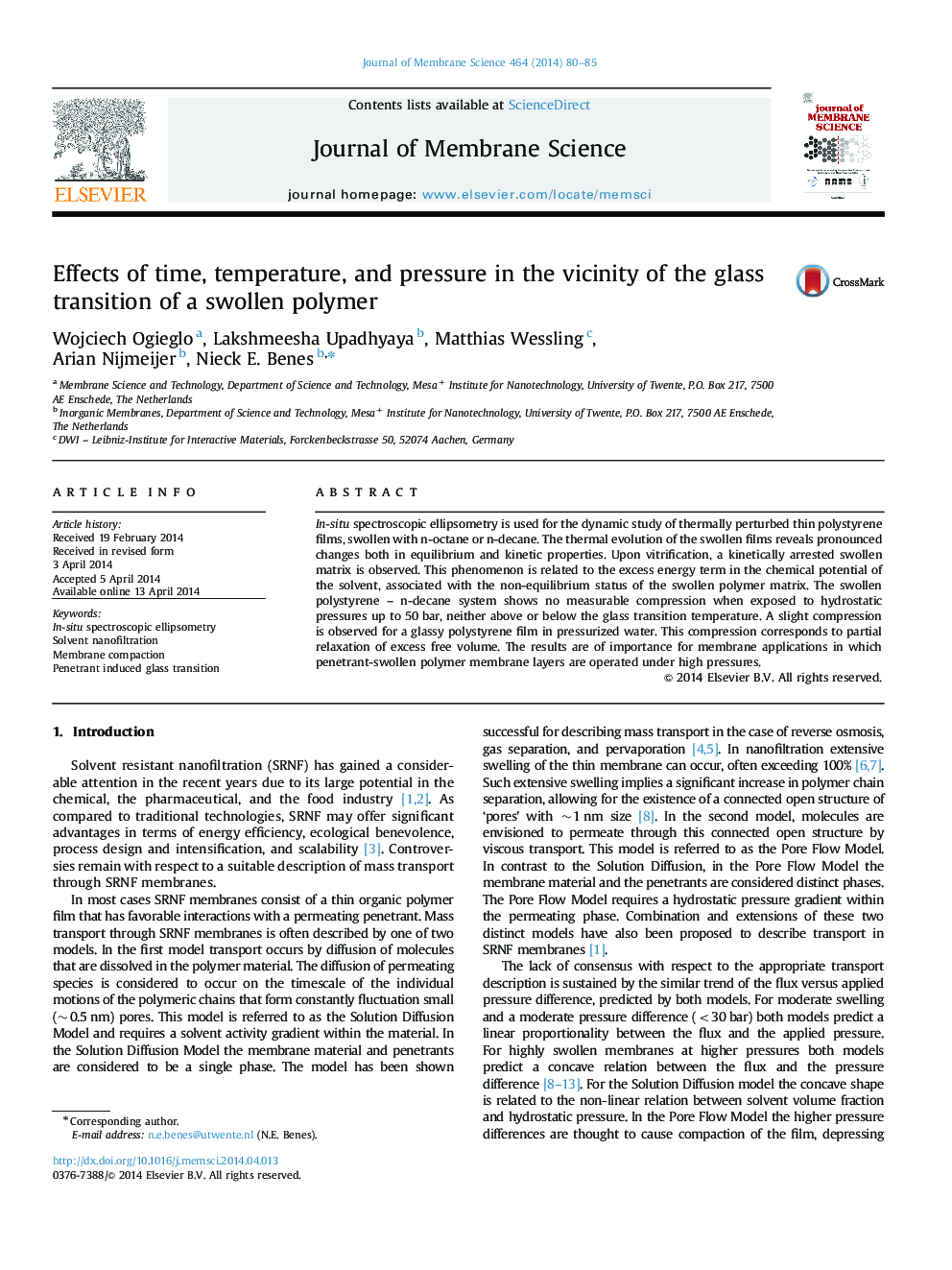| Article ID | Journal | Published Year | Pages | File Type |
|---|---|---|---|---|
| 633536 | Journal of Membrane Science | 2014 | 6 Pages |
•Dynamic response of thin, swollen, model glassy system to temperature and hydrodynamic pressure.•Direct measurement of the actual dilation of the swollen films by in-situ high-pressure ellipsometry.•Below Tg of the mixture, an over-saturated system with arrested network and mobile solvent is obtained.•Hydrostatic pressure has no significant impact on the dilation of the swollen film both above and below its Tg.•Irreversible, slight compaction is possible in a dry polymer exposed to a non-solvent.
In-situ spectroscopic ellipsometry is used for the dynamic study of thermally perturbed thin polystyrene films, swollen with n-octane or n-decane. The thermal evolution of the swollen films reveals pronounced changes both in equilibrium and kinetic properties. Upon vitrification, a kinetically arrested swollen matrix is observed. This phenomenon is related to the excess energy term in the chemical potential of the solvent, associated with the non-equilibrium status of the swollen polymer matrix. The swollen polystyrene – n-decane system shows no measurable compression when exposed to hydrostatic pressures up to 50 bar, neither above or below the glass transition temperature. A slight compression is observed for a glassy polystyrene film in pressurized water. This compression corresponds to partial relaxation of excess free volume. The results are of importance for membrane applications in which penetrant-swollen polymer membrane layers are operated under high pressures.
